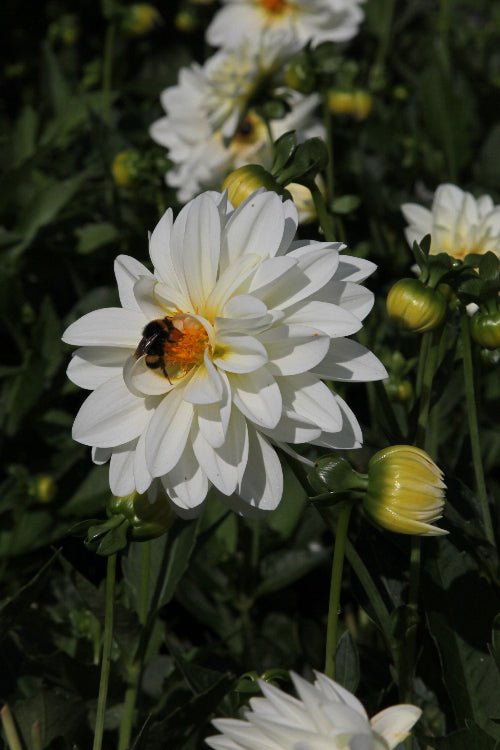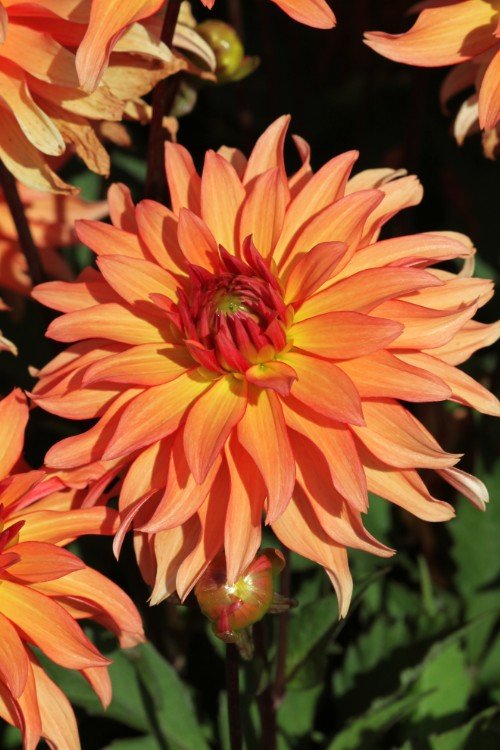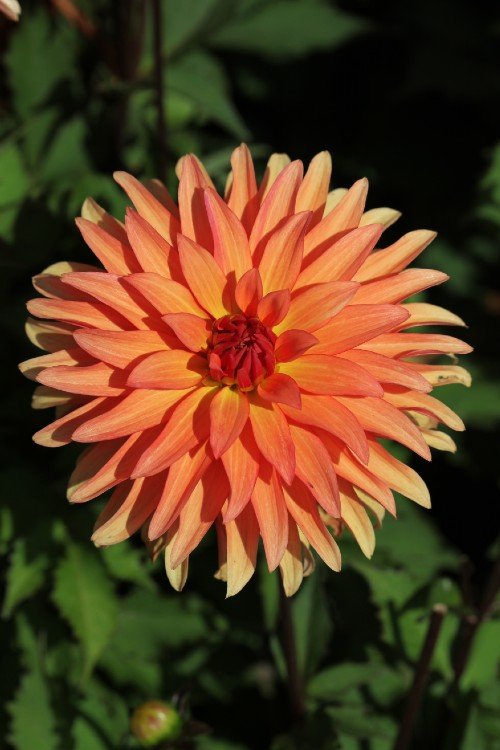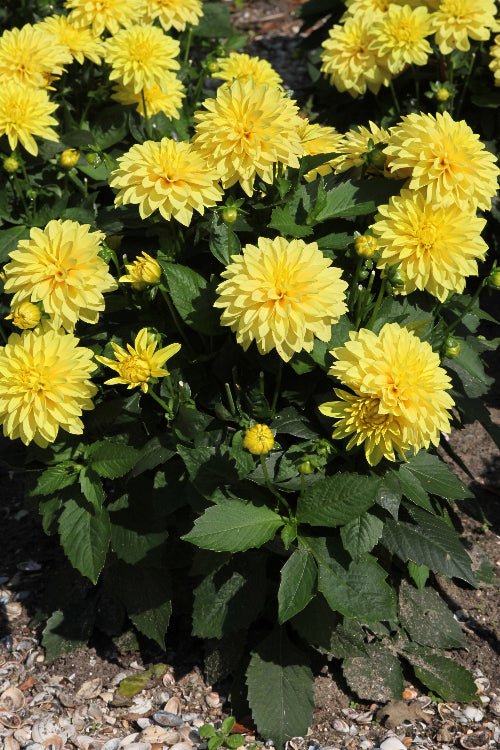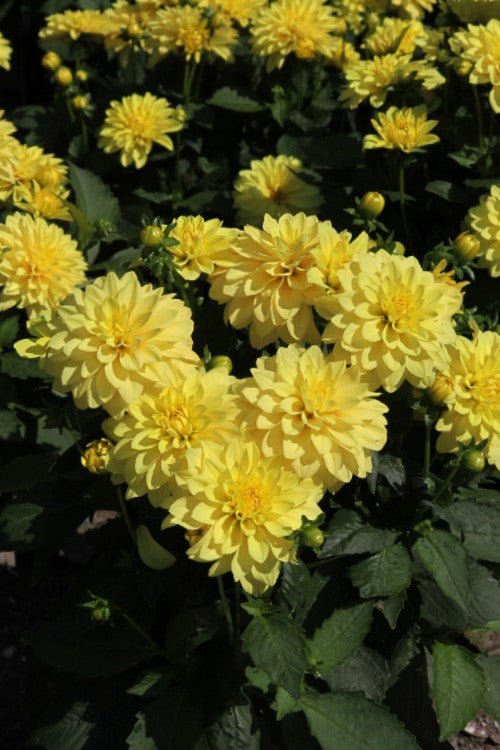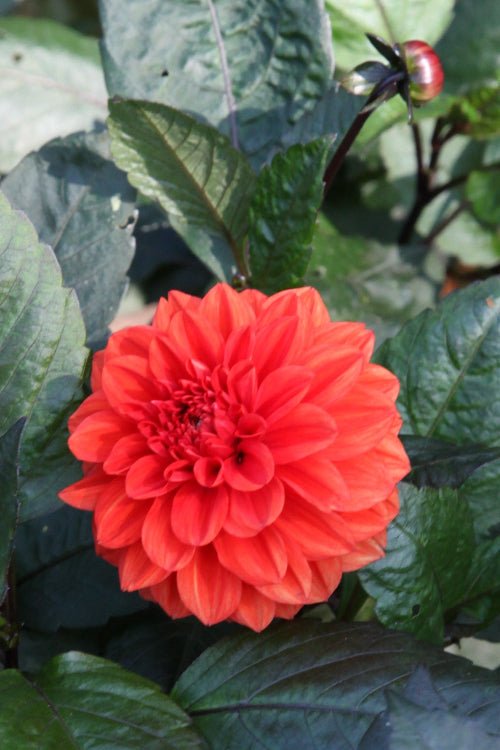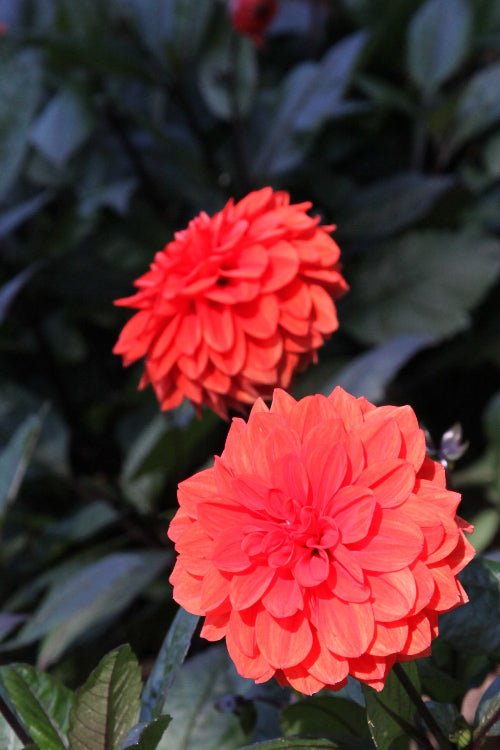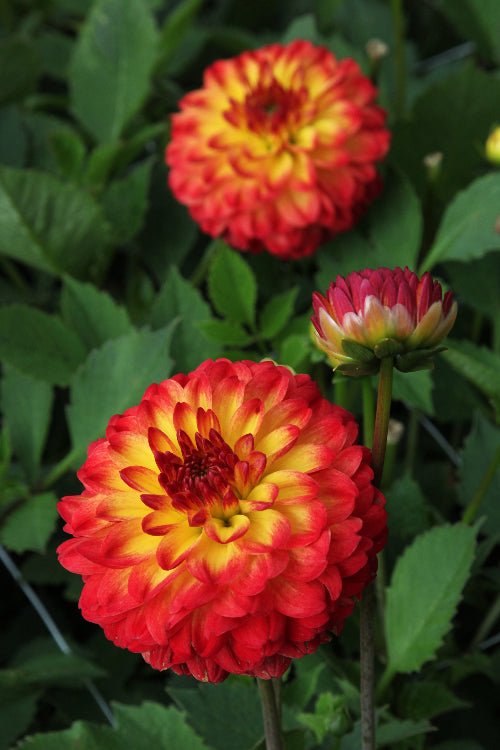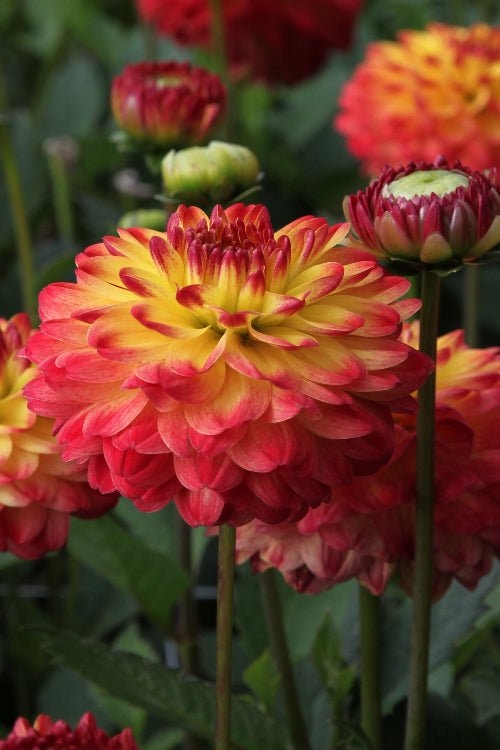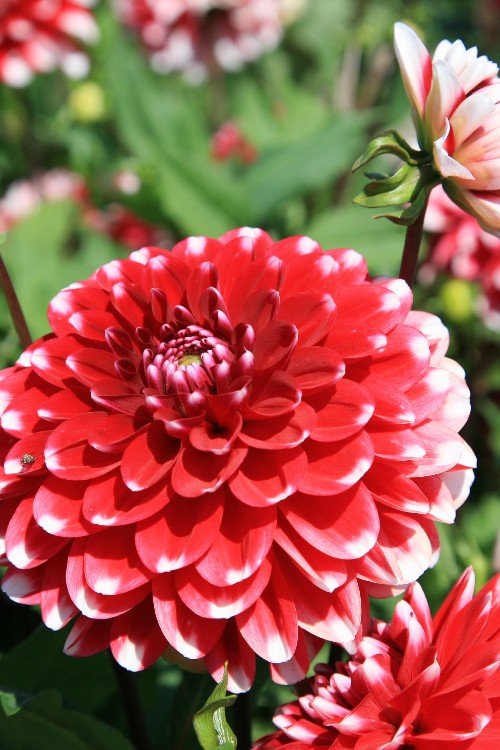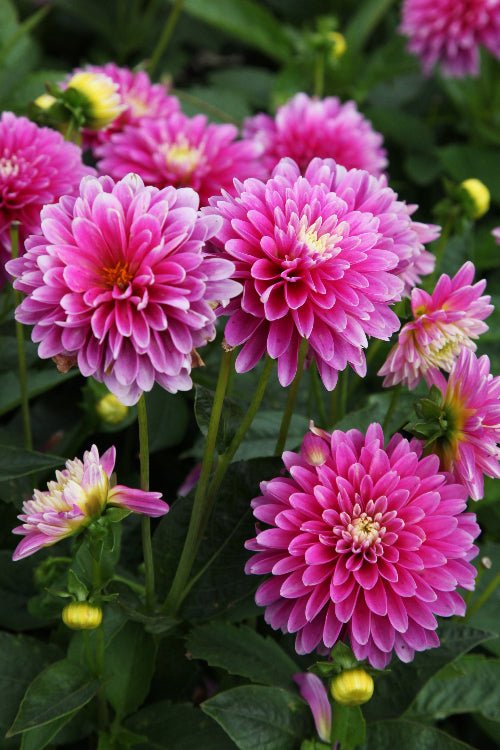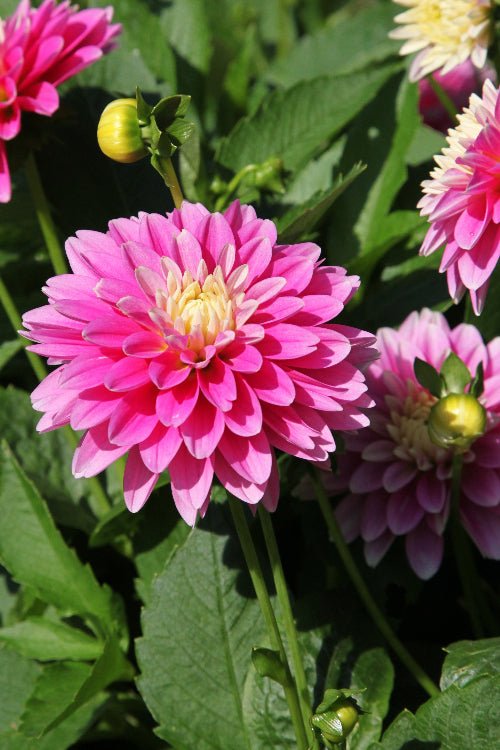Sort by:
About Art Fair
Dahlia Art Fair: the perfect addition to your garden! Add a touch of beauty and class to your garden with this amazing variety of dahlia tubers. Each tuber has multiple blooms on each stem for an abundance of vibrant color in your garden.
- Vibrant and colorful: our Dahlia tubers will provide a beautiful white with a yellow-orange center, ocean in your garden.
- Easy to grow: these tubers are easy to grow and maintain, making them perfect for beginners or experienced gardeners.
- Versatile: use these Dahlia in borders, bedding, cutting gardens, and even as container plants.
- Long blooming: enjoy blooms throughout the summer and fall seasons with these long-blooming flowers.
- High yield: our tubers are guaranteed to produce high yield and large blooms, making them perfect for cutting and arranging.
How to care for Art Fair
- Plant them in well-drained soil in a sunny location.
- Water regularly and fertilize every 2-4 weeks.
- Deadhead the flowers to encourage more blooms.
- In the fall, dig up the tubers and store them in a cool, dry place until the next planting season.
About Autumn Fairy
The Dahlia Autumn Fairy will add a splash of color to any landscape or garden. With its unique deep orange, coral-pink hue, amazing multi-layered petals, and fluffy blooms, you can expect a truly spectacular display of vibrant summer colors
- Unique deep orange, coral-pink hue with a touch of yellow
- Multi-layered petals for an impressive display
- Fluffy blooms for added texture
- Perfect for adding some summer colors to your landscape
- They can reach up to 6'' in diameter, making them a stunning focal point
- Easy to grow and care for, making it a great option for both experienced and starting gardeners
How to care for your Autumn Fairy
- Plant it in well-draining soil in a sunny spot
- Water regularly and fertilize every 2-4 weeks
- Deadhead spent blooms to encourage more flowers to form
- In the fall, cut back the stems and dig up the tubers to store them in a cool, dry place over the winter
About Cezanne
Introducing our beautiful Dahlia Cezanne - a stunning addition to any garden or outdoor space! With its vibrant yellow petals, this dahlia will surely add a pop of color and brightness to your garden. Here are some features and benefits of our Dahlia tuber Cezanne:
- Vibrant yellow petals with a beautiful intricate pattern
- Hardy and easy to grow, making it perfect for beginners or experienced gardeners alike
- Produces multiple blooms per plant, ensuring a beautiful display throughout the season
- Adds a bright and cheerful touch to any garden or outdoor space
- Provides a stunning display of flowers that will impress your friends and family
- Low-maintenance and easy to care for, making it perfect for busy individuals
- Has 6-inch yellow flowers
How to care for Cezanne
- Plant the Dahlia tuber Cezanne in a sunny location with well-draining soil
- Water regularly to keep the soil moist, but not too wet
- Fertilize the plant every few weeks with a balanced fertilizer to promote healthy growth
- Pinch back any dead or wilted blooms to encourage more blooms to grow
About Ellen Houston
The Dahlia tuber Ellen Houston is a beautiful addition to any garden. With its fluffy blooms and vibrant orange-red color, it's sure to make a statement. Characterized by a unique hue and soft, airy petals, its blossoms will add a modern touch of luxury to your space.
- Vibrant orange-red color
- Large, fluffy blooms
- Easy to grow and maintain
- Great for cut flowers
- Hardy and reliable
- Perfect for a variety of garden settings
- Excellent patio plant
How to care for Ellen Houston
- Plant it in well-drained soil in a sunny location.
- Water regularly.
- Fertilize throughout the growing season to ensure healthy growth and abundant blooms.
- Deadhead spent flowers to encourage continued blooming.
About Icoon
The Dahlia Icoon is a stunning addition to any garden. With large, double blooms in a variety of vibrant colors, this plant will add beauty and charm to your outdoor space.
- Large, double blooms in a variety of vibrant colors: a yellow center with a warm red edge
- Low maintenance and easy to grow
- Great for cut flowers or as a border plant
- Suitable for both small and large gardens
- Perfect for a large and vibrant display
- Long flowering period, from late spring to late autumn
How to care for Icoon
- To plant the Dahlia Icoon, simply dig a hole in well-draining soil and place the tuber with the eyes facing upwards.
- Cover with soil and water well.
- Once the leaves appear, continue to water regularly and fertilize every 4-6 weeks.
- Deadhead regularly to encourage more blooms.
About Little Tiger
Looking for a vibrant and unique addition to your garden? Look no further than the Dahlia Little Tiger! This stunning flower boasts fiery red petals with white edges, making it a standout among other dahlias.
- Vibrant petals with deep red markings and white tips
- Perfect for adding a pop of color to any garden
- Easy to grow and maintain
- Long-lasting blooms throughout the summer and into fall
- Suitable for use as a pot or patio plant.
- Can grow up to a height of 20"
How to plant and take care of your Little Tiger?
- Choose a sunny spot with well-draining soil
- Plant the tuber 4-5 inches deep and about 18 inches apart
- Water regularly and fertilize every 4-6 weeks
- Stake taller varieties to prevent them from falling over
- Deadhead spent blooms to encourage more flowers
- Water regularly and keep the soil consistently moist
- Pinch back tips of stems to encourage bushier growth
- Cut back foliage after frost and store tubers in a cool, dry place for the winter
About Rembrandt
Looking for a unique and beautiful addition to your garden? Look no further than the Rembrandt Dahlia! This stunning flower is sure to add a splash of color and elegance to any outdoor space.
- Bright and vibrant blooms in a range of colors, including pink, purple, and a yellow center
- Large, showy flowers that are perfect for cutting and arranging
- Easy to grow and maintain, making it a great choice for gardeners of all skill levels
- Long-lasting blooms that will keep your garden looking beautiful all season long
- Grows to a height of 20"
- Excellent patio plant
How to care for Rembrandt
- To plant, place the tubers in well-drained soil in a sunny spot in your garden.
- Water regularly and fertilize once a month for optimal growth.
- Deadhead spent blooms to encourage more flowers to grow.
- Stake at the beginning of the season, otherwise they’ll fall down.
FAQs

